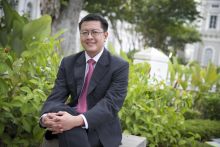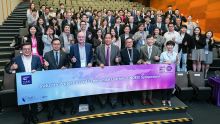Winning big, spending fast: How lottery windfalls reveal economic behaviour

A new study from SMU provides critical insights into an essential economic question with far-reaching implications: How do people respond to unexpected income changes? By analysing lottery winnings among older Singaporeans, the research uncovers how unanticipated cash windfalls directly impact spending behaviours—a question fundamental for policymakers aiming to stimulate economic activity.
Led by Associate Professor Seonghoon Kim from SMU, who also serves as the Deputy Director of Centre for Research on Successful Ageing (ROSA), in collaboration with Associate Professor Kanghyock Koh from Korea University, the research titled "Consumption Responses to Income Shocks through Lottery Winning" uniquely uses lottery prizes as a natural experiment to identify the causal effects of income changes on spending.
Lottery Wins: An Ideal Experiment for Studying Financial Behaviour
Economists have long sought to understand how households adjust their consumption in response to unexpected income changes. However, most income variations either occur predictably or coincide with significant life events, complicating the measurement of their pure impact on spending.
"Lottery wins present a rare and ideal natural experiment," explains Professor Kim. "Because lottery winnings are random and unforeseen, they allow us to directly measure how people genuinely respond to sudden financial windfalls without confounding factors."
The study finds that among Singaporeans aged 50-70, those who participate in lotteries spend roughly S$2,278 annually on tickets, with approximately half reporting winnings over a 12-month period. Remarkably, these lottery winners spent around half of their winnings within the first year, providing robust evidence that people tend to consume a substantial portion of unexpected income, more than predicted by traditional economic theories.
Diverse Households, Distinct Spending Patterns
The research also identifies significant variations in spending responses based on individual and household characteristics:
Liquidity constraints drive higher spending: Households with limited access to cash or credit—especially those under age 55 who cannot yet access their Central Provident Fund savings—spent more than twice as much of their winnings compared to less financially constrained households.
Personality influences financial decisions: Individuals comfortable with risk-taking spent significantly more of their winnings, while risk-averse individuals preferred saving more.
Preference for everyday spending: Contrary to the popular belief that windfalls lead to extravagant spending, most lottery winners primarily increased expenditure on everyday, non-visible goods rather than conspicuous luxury items such as cars or jewellery.
"Understanding how people spend unexpected income provides crucial insights for designing effective economic policies," Professor Kim points out. "Our findings strongly suggest that fiscal stimulus or government transfers are most effective when targeted towards liquidity-constrained households."
Harnessing Rich Data for Ageing and Economic Research
This study leverages data from the Singapore Life Panel (SLP)—a unique, large-scale survey involving 6,212 Singaporeans aged 50-70, providing extensive insights into ageing and financial decision-making. Established in 2015 and maintained by ROSA, the SLP enables researchers to explore critical economic behaviours that inform policies preparing Singapore for an ageing society.
The evidence from lottery windfalls not only enhances our understanding of consumption responses to income shocks but also underscores the significance of economic research in shaping policies that support financial resilience and economic vitality amidst demographic change.


